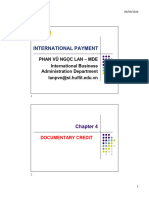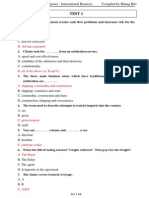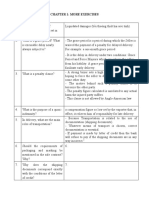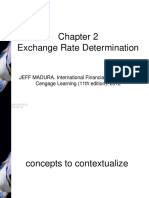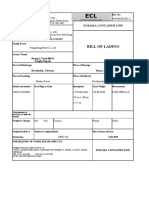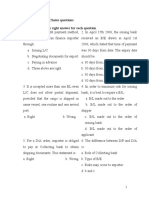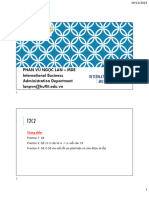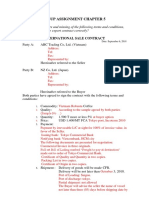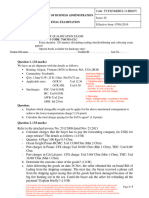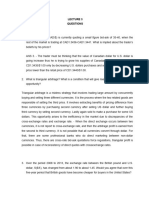0% found this document useful (0 votes)
316 views6 pagesAdvanced Forex Trading Exercises
The bank trader notices quotes for the Swiss franc, euro, and U.S. dollar that present an arbitrage opportunity. By selling $5 million for euros, then euros for Swiss francs, and finally Swiss francs for dollars, a profit of $51,036 can be made. No arbitrage is possible at an equilibrium euro/Swiss franc rate of 0.6460. Exploiting small differences between the implicit and explicit rates between currencies allows arbitrage traders to generate risk-free profits.
Uploaded by
usecathidesadCopyright
© © All Rights Reserved
We take content rights seriously. If you suspect this is your content, claim it here.
Available Formats
Download as DOCX, PDF, TXT or read online on Scribd
0% found this document useful (0 votes)
316 views6 pagesAdvanced Forex Trading Exercises
The bank trader notices quotes for the Swiss franc, euro, and U.S. dollar that present an arbitrage opportunity. By selling $5 million for euros, then euros for Swiss francs, and finally Swiss francs for dollars, a profit of $51,036 can be made. No arbitrage is possible at an equilibrium euro/Swiss franc rate of 0.6460. Exploiting small differences between the implicit and explicit rates between currencies allows arbitrage traders to generate risk-free profits.
Uploaded by
usecathidesadCopyright
© © All Rights Reserved
We take content rights seriously. If you suspect this is your content, claim it here.
Available Formats
Download as DOCX, PDF, TXT or read online on Scribd
/ 6


